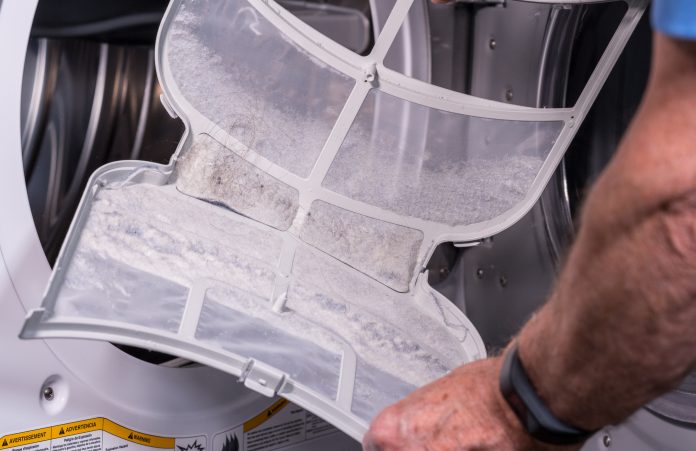Tumble drying laundry can worsen air pollution, as it releases vast amounts of possibly harmful microfibres into the air, if not coupled with more eco-friendly methods
Washing laundry could release as much as a million tonnes of microfibres annually worldwide, posing potential risks to aquatic ecosystems and humans – with most microfibers released into the air from tumble drying being generally cotton.
However, the use of fabric conditioners and dryer sheets, especially in combination, could significantly reduce microfibre release from tumble dryers.
Additionally, lint filters with smaller pores could also capture larger masses of microfibres from tumble drying – letting much fewer microfibres being released into the air – as lint filters were better at capturing polyester fibres than cotton fibres.
While extensive research has been carried out into the quantities of microfibres released down the drain by washing machines, far less is understood about the release from tumble dryers.
Liquid fabric softener or dryer sheets can reduce fibre air pollution from dryers
Published in the journal PLOS ONE, researchers from Northumbria University found that tumble drying can have as bad of an impact as machine washing clothes – especially when there are environmentally harmful products used with it.
Researchers measure the quantity of microfibres released during the washing and drying of clothing comprised of polyester and cotton, spanning across both European and North American products and washing conditions, involving over 1,200 garments.
They found that when these miniscule fragments of clothing are released into the air during tumble drying with vented dryers, they not only pose a risk to the environment, but potentially also for human health.
Dr Kelly Sheridan, an expert in textile fibres at Northumbria University, said: “By measuring microfibres released during the whole laundering process we found that microfibre loss through domestic drying is a huge concern. Ours is the first study that has simultaneously quantified microfibres released from clothing during washing alongside that released when the clothing is then tumble dried.
“We measured the volume of microfibres released during washing, as well as those captured in lint filters when tumble dried. Our study found that domestic dryers produce comparable quantities of microfibres that could be released to the air as we already see going into our water systems from a standard washing cycle.
“While many microfibres can be captured in lint filters during drying, if the pore size is too large, a significant amount will be released into the air, comparable to the amount released down the drain in washing.”
Rises in energy costs have made people use their tumble dryers less
Dr Sheridan added: “It is critical to our understanding of the impact of microfibres on human health and the environment that all the potential pathways for microfibre release, including air, are assessed. Airborne fibres are just as concerning as those present in wastewater.”
Dr Neil Lant, a Research Fellow at P&G and their leading scientist on this study, finalised: “The recent rises in energy costs have led us all to think carefully about the financial impact of using dryers, but few are aware of their impact on particulate air pollution.
“These latest findings are a call to action for the appliance industry to improve the efficiency of fibre filtration systems in vented dryers and drive the conversion to condenser dryers with no airborne fibre release, especially super energy efficient heat pump dryers.
“While we know that people in different parts of the world and in different types of households may choose alternative ways to dry their clothing, our findings in this study relate to the impacts of vented tumble drying. Further research would be needed to assess the impacts of other drying methods.”











